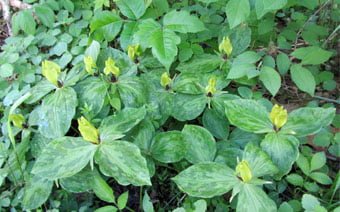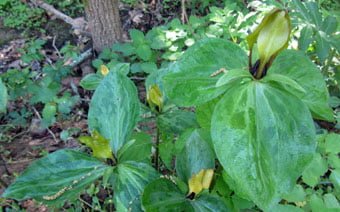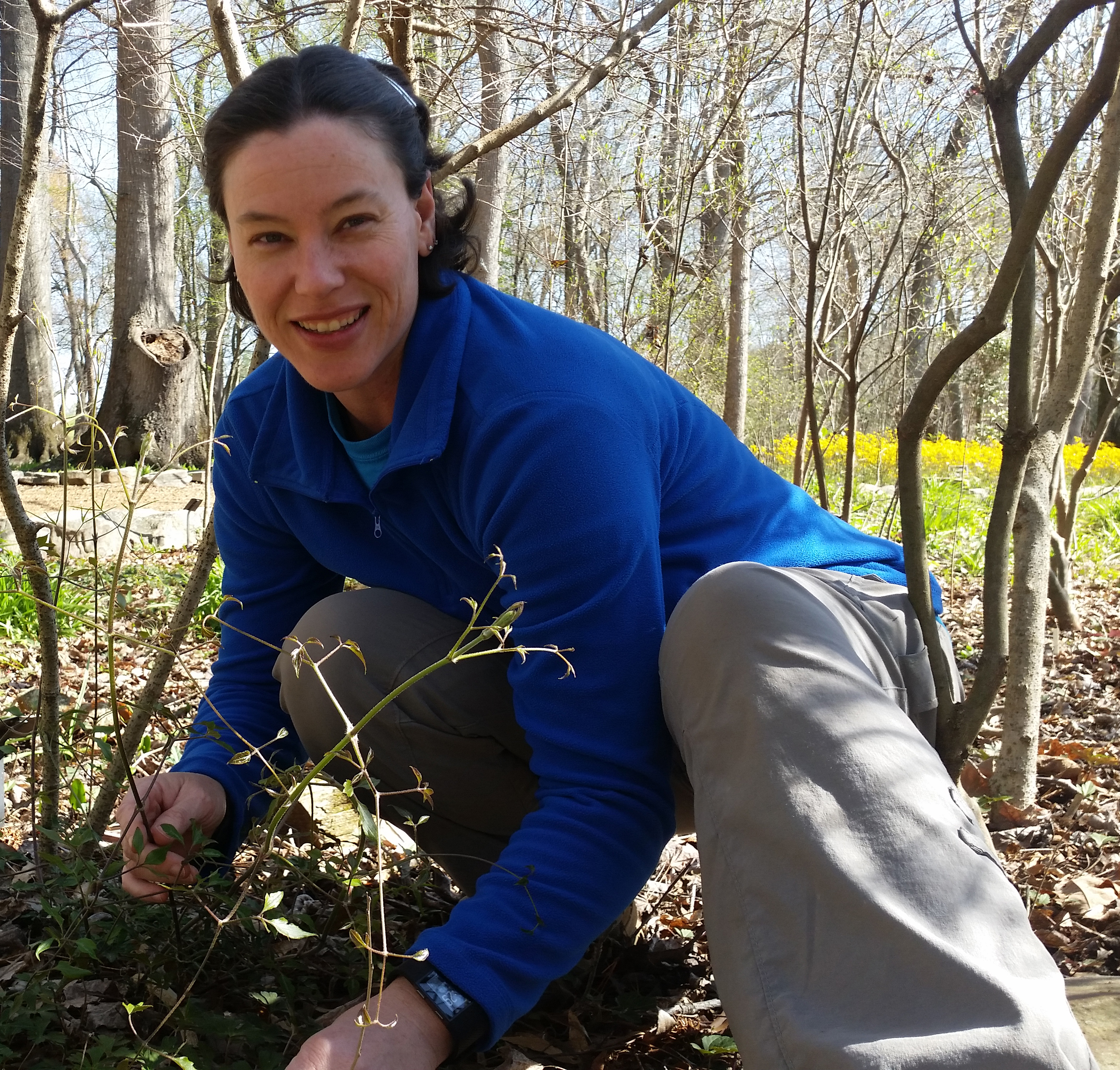
The Huntsville Botanical Garden has a comprehensive collection of Trillium species from eastern North
America. The Holmes Trillium Collection at HBG was nationally accredited in
2015 by the American Public Gardens Association Plant Collections Network. It contains
almost every known species of Trillium from
the Tennessee Valley and surrounding regions including 40 species and 220
selected forms and cultivars. The primary goal of the collection is to preserve
broad taxonomic diversity and use display gardens to educate the public about
this unique genus.
Trillium spp. generally prefer a habitat of rich, undisturbed, riparian
woodland slopes with good drainage. These spring
ephemerals take advantage of early wet spring weather by emerging, blooming,
and setting seed before the temperature starts heating up, and typically go
dormant again by July in northern Alabama. The genus name comes from the Latin
word tres, meaning three, which
refers to the leaves, petals and sepals all occurring in groups of three.
Globally Rare

Trillium tennesseense was discovered in eastern Tennessee,
on private property, and described as a distinct species by researchers from
the University of Tennessee in 20131. There are only three known extant populations in Tennessee, although
there may be additional undocumented populations.
The
Tennessee toadshade is a sessile-blooming wildflower in the subgenus Phyllantherum with pretty, yellow flowers,
which was found to be distinct
on the molecular level from species that look similar. The leaves and flowers
of Trillium tennesseense look very
similar to Trillium oostingii, the
Wateree trillium, but the longer stamens and shorter ovary help differentiate
it. When in full bloom, the fragrance has been described as similar to shoe
polish or creosote.
The plants
in our collection originate from the University of Tennessee, from a plant
trade with Rudy Cristoff in 2015, to augment the genetic diversity of our
collection. This is only one example of the fascinating and unusual plants we
have in collections at HBG. Come out to see them blooming in late March to
early April!
______________________________________________________________________________1 Edward
E. Schilling, Aaron Floden, and Susan B. Farmer (2013) A New Sessile-Flowered
Trillium Species from Tennessee. Castanea: June 2013, Vol. 78, No. 2, pp.
140-147.

